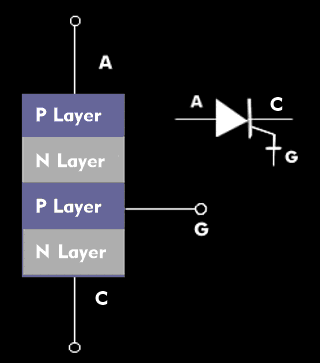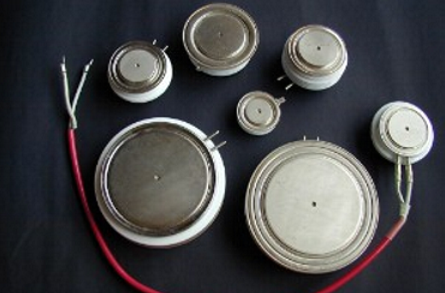gate turn-off thyristor (GTO)
GTO thyristors (Gate Turn-Off Thyristor) are power switching thyristors. Like normal thyristors, they are constructed as four- layer semiconductors, but the individual positively and negatively doped layers have different dopants.
In contrast to normal thyristors, GOT thyristors can be switched on and off by current pulses. While conventional thyristors are switched off by current and voltage reversal of the main current, GTO thyristors can be switched on like conventional thyristors with a positive control pulse at the gate and can also be switched off by a reverse control pulse. The turn-off current is relatively high, which is why GTO thyristors consist of many smaller thyristor units connected in parallel to form the GTO thyristor. However, this leads to the fact that in case of process-related deviations between the individual thyristor units, certain thyristors are already switched off, while others have to take over the switch-off current from them. This can lead to overheating and destruction of GTO thyristors.
Since the turn-off current is relatively high and, as mentioned, can lead to the destruction of GTO thyristors, special control electronics are required for the control. The turn-off capability avoids the extinction that occurs with normal thyristors.
GTO thyristors are used in power electronics, especially in IGBT technology for switching currents up to several thousand amperes, at high voltages of 5 kV and above. A further development of the GTO thyristor is the Integrated Gate Commutated Thyristor( IGCT).


